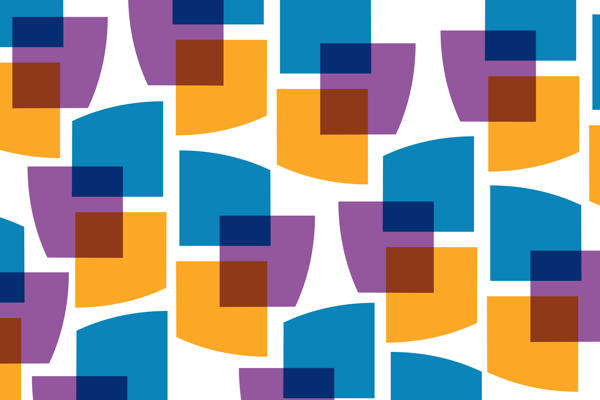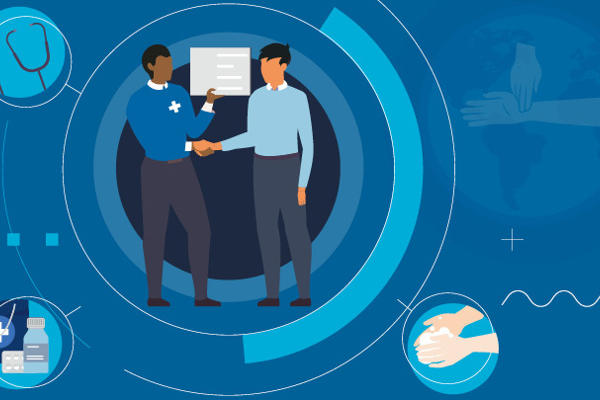After a skiing accident left him paralysed from the chest down, Dr Tom Wells FRCP still found the strength to become a doctor.
I am 49 years old and have been a consultant medical oncologist for 6 years, but I didn’t always think that this would be possible. This is because during my medical school training, I had an accident and spinal cord injury resulting in me being permanently paralysed from the mid-chest down.
I hadn’t always wanted to be a doctor. At school I did well in the science subjects and maths and I also felt that I wanted a job which involved actively doing things with a certain amount of human interaction. This led me to applying to medical school and my medical training started in 1988 at St Bartholomew’s Hospital in London. I completed two pre-clinical years, a further year in which I completed an intercalated BSc, and almost one clinical year before my accident in March 1992.
The accident happened on a skiing holiday in France. Slippery mats were provided near the bottom of one of the ski slopes. I got on one of the mats with two friends. I lay on my front on the left of the mat with one friend on the right and the other friend sitting on the back of the mat. As the mat gained speed down the slope, it started to head for a hut at the bottom with protection around it. It was only as I got closer that I realised a part of the protective barrier had been vandalised. That’s where I collided.
I suffered several injuries – broken back and spinal cord injury at mid-back level, other broken bones (jaw on both sides, left collar bone, several ribs on both sides), brain contusions and brain swelling, lung contusions and punctured lung on both sides. Thankfully both my friends were left uninjured.
I was in France for a week (I don’t remember much of my time in hospital there) where my condition was stabilised. Two days after my accident I had my jaws wired for a fractured jaw on both sides and I also had a tracheostomy tube inserted at the same operation. Then I was transferred to Frenchay Hospital near Bristol by air ambulance where I spent 3 weeks having titanium spinal rods inserted surgically to stabilise my spine, had my jaws plated and the tracheostomy tube was removed.
It was then that I slowly started to have trouble breathing.
I could sense the chaos around me and started gasping for breath. Then all of a sudden there was a moment of calm in which I knew there was a clear decision I needed to make – whether I stayed and struggled (ie carried on living) or gave up (ie died). I chose the first option and the medical team thankfully found out that my breathlessness was due to narrowing of my windpipe where the tracheostomy had been – the windpipe was only 2 millimetres in diameter!
Another tracheostomy was put in below this narrowing so that I could get air in and out of my lungs again. This saved my life, but unfortunately I was left unable to speak because the blockage above the new tracheostomy tube prevented me from projecting air from my lungs past my vocal cords. Despite this, it was clear to me that this experience would be pivotal in me being determined to get on with life.
Being so aware that I was about to die changed my outlook on life for good; from this point forward I would look at life as a series of opportunities rather than being all consumed by what I had lost as a result of my accident.
I was transferred from Frenchay to Odstock Spinal Injuries Unit near Salisbury. This was where I had to adapt to life in a wheelchair as well as having several operations on my windpipe to correct the narrowing. These operations didn’t start until 9 months after my accident (the surgeon wanted to see if the narrowing improved on its own over time), so I was unable to speak for that entire duration.
Being unable to speak was incredibly difficult, but fortunately only temporary because the reconstructive surgery on my windpipe was successful. I spent a long time in Odstock – 14 months in total. This gave me plenty of time to reflect on what I wanted from life and during this time I made the decision to try to return to medical school. I was discharged from hospital in June 1993 to an adapted house next to my parents’ house on the outskirts of Bristol.
My medical school in London was willing to have me back, but in the end I decided to go to Bristol Medical School, close to my adapted home. I did three clinical years in Bristol, meaning that I repeated a year. This was a good thing to do because it enabled me to see if I had the stamina to do a full day and I was also able to see whether I could examine patients from a wheelchair.
I had to adapt my examination technique a little, but overall it was a relief that I could manage it. I qualified as a doctor (MB ChB) in June 1996 and started work as a doctor in August 1996. For my first 4 years of work, the postgraduate dean funded my jobs as a supernumerary. This was so that I could choose hospitals close to home in which to work. I passed the membership of the Royal College of Physicians (MRCP) exams during this time and one of the MRCP exams involves examining patients in which there is a high level of scrutiny, so I can clearly examine patients at the expected standard despite my disability.
After a period of research leading to an MD degree, I specialised in oncology and I have been a consultant medical oncologist since 2013.
It is important to state that not one patient has questioned my ability – patients see the doctor, not the person in the wheelchair.
My disability has led to other opportunities. I helped co-found the disability course at Bristol Medical School almost 25 years ago and I have given a presentation on the course over this time about my perspective of disability. I also helped develop essential and desirable skills, attitudes and knowledge that medical students should have by the end of their medical training.
Having a disability isn’t all about lack of ability; the challenges of living with a disability can to some degree heighten the person’s awareness of some of the challenges that patients face. With this in mind, I wrote a book – Behind the Curtains – about my experiences, both from the perspective of patient and doctor.
The path to my chosen career since my accident has been a very challenging one, over and above most challenges. However, I am only too aware of how important the key support and opportunities have been in enabling me to give it a go!
Although my life had been relatively carefree before my accident, my disability and the daily challenges of living with a significant disability has changed my perspective on life for the good.
Being able to make the most of my abilities, do my job and embrace the fact that This Doctor Can, I have hopefully changed other people’s perspectives for the good too. It is imperative to do as much as we can to accommodate doctors with a disability and to tackle barriers which can stand in their way. They have a great deal to offer.
Would you like to share your experience of becoming a doctor? Get in touch on Twitter via @thisdoctorcan.




